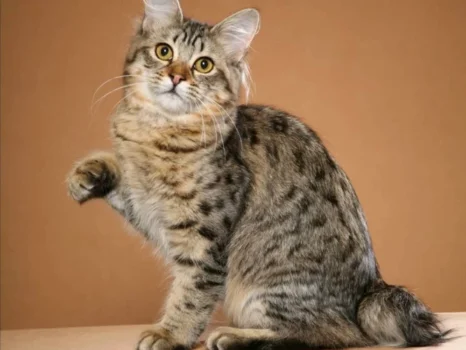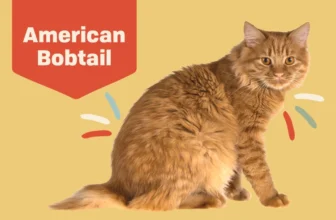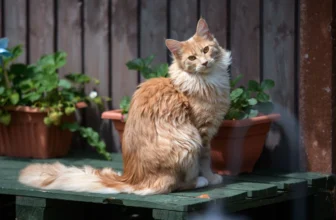As cat lovers, we are always fascinated by the diversity of feline breeds and their unique characteristics. One such breed is the American Bobtail, known for its distinctive short tail and wild appearance. However, understanding the behavior of American Bobtails in different environments can be a challenging task. In this article, we will explore the history and personality of American Bobtails, factors affecting their behavior, how they behave in different environments, common problems they face and their solutions, and tips for creating a positive environment for your furry friend. So, let’s dive into the world of American Bobtails and discover what makes them such special companions.
Overview of American Bobtails
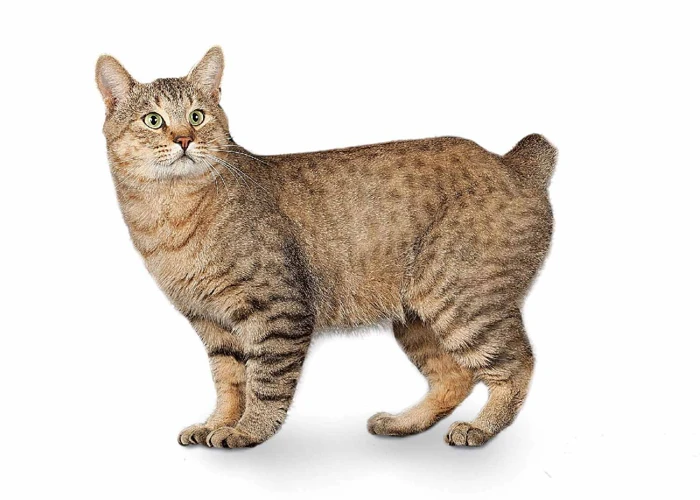
As pet owners, it’s important to understand the behaviors and personalities of our furry friends to provide them with the best possible care. When it comes to American Bobtails, their unique history and personality traits make them a fascinating breed to learn about. From their history as wild cats to their adaptability to various living environments, there is much to discover. In this section, we will explore the fascinating world of American Bobtails and how they behave in different environments. For more information about American Bobtails in different environments, check out /american-bobtails-environment-adaptation/.
The History of American Bobtails
The history of American Bobtails is shrouded in mystery, and there is still much we don’t know about their original development. However, there is some information available that suggests these cats have been around for centuries. One popular theory is that American Bobtails are descendants of the domestic cats brought over to North America by early settlers. Another theory suggests they are the result of crossbreeding between domestic cats and wild lynx, giving them their distinctive bobbed tails. Whatever their origins, American Bobtails are a beloved breed of cat today.
Some key points to consider when exploring the history of the American Bobtail include:
| Point | Description |
|---|---|
| Origins: | The American Bobtail is a breed of cat that is native to North America. |
| Development: | It is believed that this breed arose independently in several different locations across the United States, dating back several hundred years. |
| Appearance: | American Bobtails are easily recognizable by their short, bobbed tails. They also typically have longer than average hind legs and a muscular build. Their coats come in a variety of colors and patterns. |
| Popularity: | The American Bobtail is a relatively new breed, and so its popularity has grown slowly. However, these cats are now recognized by many cat fancier groups and are loved for their unique personalities and distinctive appearance. |
| Adaptability: | American Bobtails are known for their adaptability and can thrive in many different environments. They are often described as easy-going and friendly, making them great family pets. |
If you want to learn more about the adaptability of American Bobtails, check out our article on factors that affect their behavior and adaptability. If you’re considering bringing an American Bobtail into your home, you may also be interested in reading our guide to helping your new pet adjust to their new home. For those who like to travel, we also have an article on traveling with American Bobtails.
The Personality of American Bobtails
American Bobtails are widely known for their friendly and affectionate personalities. They are not only playful but also highly intelligent, making them perfect family pets. They are also known for their adaptability to various environments and situations, making them a top choice for many households.
Here is a table that summarizes some of the personality traits of American Bobtails:
| Trait | Description |
|---|---|
| Playful | American Bobtails enjoy playing games, whether with their owners or other pets. They have a fondness for toys, and they can easily entertain themselves for hours with balls and other objects. |
| Affectionate | American Bobtails thrive on human attention and affection. They love to cuddle and be close to their owners, often following them from room to room. |
| Intelligent | American Bobtails are highly intelligent and can quickly learn new tricks or commands. They love to be mentally stimulated, which is why puzzle toys and treat-dispensing toys are ideal for them. |
| Adaptable | American Bobtails can adapt to different environments with ease. They are known to adjust well to indoor and outdoor living situations, as well as to children and other pets. They can also adapt to changes, such as a new family member or a move to a new house. |
| Independent | Despite being affectionate, American Bobtails are not needy. They enjoy their alone time and can entertain themselves without requiring constant attention. This independence stems from their wild cat ancestry. |
It’s important to note that while the above traits are common among American Bobtails, each cat has its own unique personality. This is why socialization and training play a crucial role in shaping the behavior of American Bobtails. For more information on socialization, please read our article on the role of socialization in American Bobtails. Additionally, understanding the adaptability of American Bobtails is important when considering them as pets, and you can learn more about that in our article on American Bobtails’ adaptability comparison or the adaptability of American Bobtails for family pets. Creating a positive environment for your American Bobtail is vital to ensuring they will thrive, which will be covered in the next section.
Factors that Affect American Bobtail Behavior
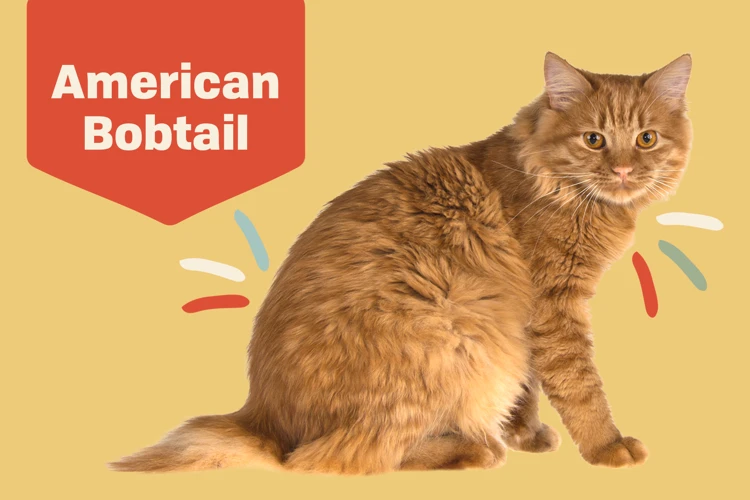
As pet owners, it is crucial to understand the behavioral tendencies of our furry companions. American Bobtail cats, with their distinctive short tails and muscular physique, have a unique personality that demands attention. The behavior of American Bobtails can be influenced by several factors that owners should be aware of. These factors include climate and weather, living situation, and owner interaction. By understanding how these factors can impact your American Bobtail’s behavior, you can create an adaptable environment that will ensure your cat’s happiness and well-being.
Climate and Weather
Factors such as climate and weather can significantly impact the behavior of American Bobtails. Here are some ways that different weather conditions can affect your cat:
- Hot Weather: American Bobtails, like most cats, enjoy warmth, but it is important to ensure they do not overheat. During hot weather, they may become lethargic, curl up in cool places, or seek out sources of cool air to lie in front of. It’s important to keep them hydrated and provide plenty of shade and ventilation.
- Cold Weather: American Bobtails have a thick, lush coat that keeps them well insulated during the winter months. They may become more active during cooler weather, but if it is too cold, they may also seek out warmth, either from cuddling with their owners or lying in warm spots in the house. If you notice your cat shivering, it’s important to make sure they are warm enough and provide them with extra blankets or a heated bed.
- Windy Weather: Windy weather can be unsettling for American Bobtails as their sensitive ears may be bothered by the noise. They may become more agitated or stressed during windy conditions, and it’s important to provide them with a safe and quiet space where they can relax.
- Rainy Weather: While some cats dislike water, other cats like American Bobtails may enjoy being out in the rain. If they do, it’s important to dry them off after they come indoors.
- Stormy Weather: Thunderstorms and other loud noises may disturb American Bobtails. They may become anxious, hide, or seek out their owners for comfort. Providing a safe, quiet space for them during storms can help alleviate any stress they may experience.
By understanding how climate and weather can affect the behavior of American Bobtails, you can help create a comfortable and safe environment for them no matter the weather conditions.
Living Situation
When it comes to the living situation of American Bobtails, several factors can affect their behavior. These factors include the size of the living space, the presence of other pets, and the number of people living in the household. Let’s take a closer look at how these factors can influence your American Bobtail’s behavior.
| Living Situation | Possible Effect on American Bobtail Behavior |
|---|---|
| Small Living Space | American Bobtails are relatively small cats, so they can adapt well to living in smaller spaces like apartments. However, they still need enough room to play and exercise, so lack of space can lead to boredom and destructive behavior. |
| Large Living Space | American Bobtails can thrive in larger living spaces like houses, where they have plenty of room to roam and explore. However, they may still prefer to have a designated space to call their own, such as a cat tree or cozy nook. |
| Presence of Other Pets | American Bobtails are generally social cats and can get along well with other pets, especially if they are introduced to them at a young age. However, they may become territorial if they feel their space is being invaded, which can lead to aggression. |
| Number of People in the Household | American Bobtails are affectionate cats and enjoy being around people. However, if they are constantly surrounded by a large number of people, they may become overwhelmed and seek out a quiet space to retreat to. |
It’s important to consider your American Bobtail’s individual personality and needs when determining their living situation. If you have a more active cat, a larger living space with plenty of opportunities for play and exploration may be preferable. On the other hand, a more laid-back cat may prefer a smaller space with a cozy bed to relax in. By providing your American Bobtail with a suitable living situation, you can help ensure a happy and healthy cat.
Owner Interaction
American Bobtails are known for their affectionate and sociable personalities, which means that their interactions with their owner can have a significant impact on their behavior. Here are some key factors to consider when interacting with your American Bobtail:
- Positive Reinforcement: When training or disciplining your American Bobtail, it’s important to use positive reinforcement. This means rewarding good behavior with treats or praise, rather than punishing negative behavior.
- Communication: Communication is crucial when interacting with your American Bobtail, as it helps establish trust and strengthens the bond between you both. Use a consistent tone of voice and body language to reinforce commands and make sure to spend time playing and cuddling with your feline friend.
- Respect Boundaries: While American Bobtails are generally sociable, they still require their own space and boundaries. Respect your cat’s need for privacy and make sure to provide them with a comfortable environment to retreat to when they need some alone time.
- Training: Training is important for shaping your American Bobtail’s behavior, but it should also be a positive experience for both you and your cat. Use a reward-based system and make sure to keep training sessions short and frequent to maintain your cat’s interest.
- Playtime: American Bobtails are active cats that require regular physical activity and playtime. Provide plenty of toys and opportunities for your cat to play, and make sure to engage with them during these activities to strengthen your bond.
By focusing on positive reinforcement, clear communication, and respect for boundaries, you can encourage positive behavior in your American Bobtail and strengthen your relationship with them.
How American Bobtails Behave in Different Environments
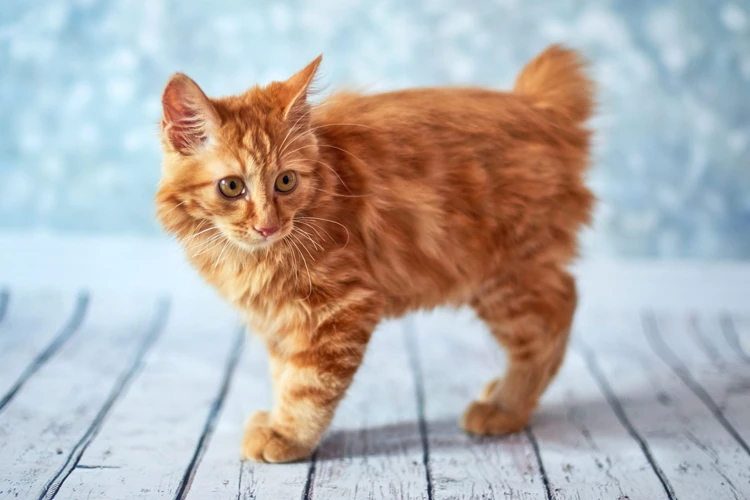
As cat owners, it’s important to understand how our feline companions behave in different environments. American Bobtails are no exception. These unique cats have a distinct personality and are known for their love of exploration and playfulness. But what happens when we introduce different environments into the mix? Will their behavior change? In this section, we’ll take a closer look at how American Bobtails behave in both indoor and outdoor environments.
Indoor Environment
The indoor environment can have a significant impact on the behavior of American Bobtails. These cats are known for their love of space and freedom, so it’s important to create a comfortable and stimulating environment for them. Here are some factors to consider when designing your indoor space for your American Bobtail:
| Factor | Impact on Behavior |
|---|---|
| Size of Living Space | American Bobtails need plenty of space to roam and play. If their living space is too small, they may become bored or restless, which can lead to destructive behavior. |
| Availability of Vertical Space | These cats are natural climbers, so it’s important to provide them with plenty of vertical space to explore. Cat trees, shelving, and other climbing structures can help fulfill this need and keep them mentally stimulated. |
| Lighting | Good lighting can have a positive impact on the mood and behavior of American Bobtails. Make sure their living space is well-lit, with plenty of natural light if possible. |
| Noise Level | American Bobtails are generally less sensitive to noise than other cat breeds, but they still appreciate a quiet living environment. Try to minimize loud noises and provide them with a cozy, peaceful space to relax in. |
| Availability of Toys and Playtime | These cats love to play, so make sure they have plenty of toys and opportunities for playtime. Interactive toys such as puzzle feeders can also help keep them mentally stimulated. |
By taking these factors into consideration, you can create a comfortable and stimulating indoor environment that will help your American Bobtail thrive. If you notice any negative changes in their behavior, such as destructive behavior or excessive boredom, consider adding more vertical space or providing more toys and playtime.
Outdoor Environment
American Bobtails are an energetic and adventurous breed who love to explore the great outdoors. However, it’s important to note that outdoor environments can pose certain risks and challenges for these felines. Here are some factors to consider when allowing your American Bobtail to venture outside:
- Availability of Shelter: American Bobtails need access to shelter, especially during extreme weather conditions such as heavy rain or extreme heat. Ensure that there are safe hiding spots where your cat can retreat in case of emergencies.
- Predator Threats: Being natural hunters, American Bobtails may be tempted to chase after small prey in the outdoor environment. However, this also puts them at risk of encountering larger predators such as coyotes or mountain lions. Keep a watchful eye on your cat to avoid any dangerous encounters.
- Traffic: Outdoor cats are at a higher risk of being hit by a car than indoor cats. Make sure your American Bobtail has a safe and secure outdoor environment, away from busy streets and traffic.
- Parasites and Diseases: The outdoor environment may expose your cat to various parasites like fleas and ticks, as well as diseases spread by other outdoor cats. Regular vet checkups, flea and tick preventatives, and vaccinations can help protect your feline friend.
With proper precautions in place, outdoor environments can provide much-needed stimulation for American Bobtails, who love to climb trees, run around, and smell new scents. However, it’s important to supervise your cat and ensure their safety at all times.
Common Problems and Solutions
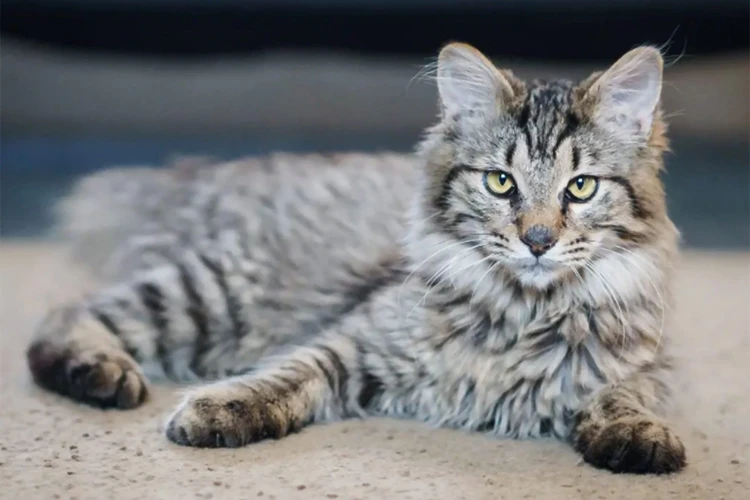
As much as we love our American Bobtails, they aren’t without their challenges. Sometimes, their behavior can be problematic for us as owners. It can be perplexing to deal with aggression, fearfulness, or attention-seeking behavior from our feline companions, but luckily there are solutions to these common issues. Let’s dive into some of the common problems that may arise with American Bobtails, and explore some constructive ways to solve them. By understanding these solutions, we can ensure a happier and healthier life for both us and our feline friends.
Aggression
Aggression in American Bobtails can be a result of many factors such as fear, stress, territorial behavior, or even boredom. It is important to understand that aggression in cats is a natural instinct, but excessive aggression that endangers humans or other animals needs to be addressed. Here are some possible reasons for aggression in American Bobtails and solutions to prevent it:
- Lack of socialization: If your American Bobtail was not properly socialized as a kitten, they may become aggressive towards strangers, other animals, or even family members. This can result in fear-based aggression or territorial behavior. The best solution for this is early socialization practices such as introducing the cat to various people, toys, and experiences during kittenhood. If your cat is already an adult, try gently exposing them to new experiences and people in a controlled environment.
- Medical Issues: In some cases, aggression in cats can be a symptom of an underlying medical condition. Pain or discomfort can put the cat on the defensive and cause them to lash out. If you notice any sudden changes in your cat’s behavior, it is important to take them to the veterinarian to rule out any health issues.
- Frustration: If your American Bobtail doesn’t have enough mental/physical stimulation, they may become bored and frustrated, leading to aggression out of sheer frustration. Make sure your cat has plenty of toys, scratching posts, and playtime to keep them mentally stimulated.
- Territorial Behavior: American Bobtails are known for their territorial behavior, and they can become aggressive towards other cats or animals that they feel are invading their space. Providing separate living spaces, litter boxes, and feeding areas for each cat can help reduce territorial behavior.
- Fear: Aggression can sometimes be an expression of fear in cats. If your American Bobtail is scared of a particular person, animal, or situation, they may resort to aggression as a defense mechanism. It is important to identify what is causing the fear and work to alleviate it through desensitization techniques and positive reinforcement training.
Remember, aggression in American Bobtails can be prevented through early intervention and proper socialization, mental and physical stimulation, and recognizing and addressing any underlying medical or emotional issues. If you are ever uncertain about how to handle your cat’s aggressive behavior, consult with a veterinarian or animal behaviorist for guidance.
Fearfulness
Fearfulness is a common issue that American Bobtails may face in different environments. This may be due to a previous traumatic experience or lack of socialization. Fear can manifest in different ways and it is important for pet owners to recognize the signs and address them appropriately. Here are some signs that your American Bobtail may be fearful:
- Trembling: Your cat may shake or tremble in response to a perceived threat.
- Hiding: American Bobtails may hide under furniture or in small spaces when they feel scared.
- Increased Aggression: Fear can also manifest in aggressive behavior toward other pets or humans.
- Excessive Meowing: Your cat may meow excessively when they feel anxious or scared.
It is important to address your American Bobtail’s fears in a way that is both gentle and effective. Punishing your cat may increase their anxiety and make the problem worse. Here are some tips for helping your American Bobtail feel more comfortable:
- Positive Reinforcement: Give your cat treats and praise when they exhibit brave behavior in the face of something they may perceive as scary.
- Create a Safe Space: Providing a designated area, such as a cat tree or cozy bed, can give your cat a sense of security when they feel frightened.
- Socialization: Exposing your American Bobtail to new experiences early on can help prevent fears from developing. However, if your cat is already fearful, gradual exposure can help decrease their anxiety over time.
- Consult a Professional: If your cat’s fearfulness is affecting their daily life or causing aggression, it may be time to seek help from a professional cat behaviorist who can offer more specific advice and guidance.
Remember, each cat is an individual with unique experiences and personalities. Addressing fearfulness in a gentle and customized way can help your American Bobtail feel more confident and relaxed in their different environments.
Attention-Seeking Behavior
Attention-seeking behavior is quite common among American Bobtails. As natural attention-seekers, they often try to get their owner’s attention, even if it means behaving badly. Here are some examples of such behaviors along with their possible solutions:
| Behavior | Solution |
|---|---|
| Excessive meowing | Try to identify the reason for excessive meowing. It could be due to hunger, boredom, or the need for attention. Make sure to feed and play with your American Bobtail regularly to keep them engaged and satisfied. |
| Scratching furniture | Provide your American Bobtail with a scratching post or a designated scratching area. Encourage them to use it by praising them when they do so. You can also use deterrents like double-sided tape or citrus spray to keep them away from furniture. |
| Jumping on countertops | Train your American Bobtail to stay off countertops by consistently redirecting them to the floor and rewarding them when they comply. You can also use deterrents like aluminum foil, sticky tape or upside-down carpet runners to discourage them from jumping up. |
It is important to remember that punishment or negative reinforcement is not an effective solution to attention-seeking behavior. Instead, try to identify the root cause of the behavior and address it in a positive way. Consistent training, playtime and affection can go a long way in preventing and reducing attention-seeking behavior in American Bobtails.
Tips for Creating a Positive Environment for Your American Bobtail
As an American Bobtail owner, it’s important to create a positive environment for your furry friend. The right living conditions, playtime, training, and socialization can greatly impact your cat’s behavior and overall happiness. In this section, we will provide you with some practical tips for ensuring your American Bobtail’s welfare and improving your bond with them. Let’s dive in and explore some of the best ways to create a welcoming and healthy environment for your feline companion.
Designing Your Home
When it comes to designing your home for your American Bobtail, there are a few things you need to consider. These cats are known for their love of play and exploration, so it’s important to create an environment that will satisfy their natural curiosity and keep them entertained. Here are some tips for designing a home environment that will make your American Bobtail happy:
1. Provide Plenty of Places to Climb and Explore: American Bobtails are active cats who love to climb and explore, so make sure your home has plenty of opportunities for them to do so. You can create climbing structures out of shelves, cat trees, or even bookcases. Just make sure they are secure and won’t fall over. You can also create hiding spots with boxes or tunnels, which will add an extra layer of fun and exploration.
2. Create a Cozy Spot for Rest: Despite their active personalities, American Bobtails do require a comfortable and cozy place to rest. Make sure there are plenty of soft surfaces for them to curl up on, like a bed or a cushioned window seat. You can also create a cozy den-like space by using a tent or a box with a comfortable lining.
3. Provide Plenty of Toys: American Bobtails are highly intelligent and love to play, so make sure that they have a variety of toys available to keep them entertained. Toys like feather wands, catnip mice, and puzzle feeders are always popular among cats. You can also rotate toys to keep things interesting.
4. Consider their litter box: Make sure the litter box is in a quiet and accessible area, away from their food and water bowls. American Bobtails are known for their fastidiousness and require a clean litter box.
5. Keep Your Home Safe: American Bobtails are known for their curious nature, so make sure your home is safe for them to explore. Keep household cleaners, chemicals, and small objects out of their reach. You can also consider installing child-proof latches on cabinets where you store hazardous items.
By following these tips and designing your home with your American Bobtail in mind, you’ll create a fun and stimulating environment that will keep them happy and healthy.
Playing with Your American Bobtail
Playing with your American Bobtail is an excellent way to bond and build a strong relationship with your feline companion. Here are some tips to make playtime with your American Bobtail exciting and enjoyable for both you and your pet:
- Variety is the key: American Bobtails are intelligent cats and need different types of play to keep their minds active. Mix up the toys and games you play with your furry friend. Introduce new toys, and try different activities such as playing hide and seek, chasing games, or puzzle toys.
- Playtime schedule: American Bobtails prefer a routine, and playtime should be scheduled at the same time every day. Plan your playtime sessions for 10-15 minutes each day, a few times a day. This schedule will ensure that your furry companion gets enough exercise and will look forward to playtime eagerly.
- Interactive Toys: American Bobtails love interactive toys that can grab their attention and keep them engaged. Toys that mimic the movement of prey like birds, mice or insects are ideal. You can also play fetch with your American Bobtail using small toys like balls and plushies.
- Scratching Post: Scratching is a natural behavior for all cats, and American Bobtails are no exception. Invest in a scratching post or scratch mat to fulfill this need while preventing your furniture from being damaged. Remember to reward your cat every time it uses the post or mat to encourage the behavior.
- Keep it Safe: Always supervise your cat during playtime and make sure you use toys that are safe for them. Avoid small toys that can be swallowed or have sharp edges that may injure your cat.
Playing with your American Bobtail is an excellent way to strengthen your bond and keep your cat physically and mentally active. Remember to change up the toys, introduce interactive toys, and schedule playtime consistently.
Training and Socialization
The training and socialization of American Bobtails can go a long way in creating a harmonious living environment. Here are some tips to help you train and socialize your American Bobtail:
- Start early: It is important to start socializing your American Bobtail when they are still young before they become too set in their ways. Expose them to a variety of people, sounds, and environments while they are still kittens.
- Positive reinforcement: American Bobtails respond well to positive reinforcement. Reward them with treats, praise, and affection when they exhibit good behavior. Avoid using punishment as a form of discipline as it can make them fearful and aggressive.
- Consistency: Consistency is key when it comes to training your American Bobtail. Use the same commands and signals consistently so they can learn what is expected of them.
- Training sessions: Keep training sessions short and frequent, preferably daily. This helps your American Bobtail to retain information and learn new behaviors.
- Socialization: Socializing your American Bobtail involves introducing them to other cats, dogs, and humans. It is important to do this gradually and under supervision to avoid any aggression or injury. Use positive reinforcement to reward good behavior and discourage any unwanted behavior.
By following these training and socialization tips, you can help your American Bobtail become a well-adjusted and well-behaved member of your family. Remember, it takes time and patience to train and socialize a pet, but the rewards are well worth it.
Conclusion
After understanding the behavior of American Bobtails in different environments, it is important to conclude that these cats are fascinating and unique pets with a lot of personality. By raising an American Bobtail in a positive environment and treating them well, they can be a loyal and loving companion for many years to come.
However, it is important to remember that American Bobtails, like all animals, are individuals with unique personalities that can be affected by different factors. Climate, living situations, and owner interaction are all factors that can influence their behavior.
As the owner of an American Bobtail, it is important to recognize and address any problems that may arise, such as aggression, fearfulness, or attention-seeking behavior. Understanding these problems and taking steps to address them can create a more positive environment for both the cat and the owner.
Designing the home with your American Bobtail and their needs in mind, playing with them regularly, and training and socializing them can all contribute to a happy and healthy cat.
In conclusion, American Bobtails are fascinating and unique cats that require attention and care to thrive. By understanding their behavior and providing a positive environment, they can be a wonderful companion for many years to come.
Frequently Asked Questions
What is the average lifespan of an American Bobtail?
The average lifespan of an American Bobtail is 13-15 years.
Do American Bobtails require special grooming?
American Bobtails do not require extensive grooming, but brushing their fur occasionally can help maintain their coat and manage shedding.
Can American Bobtails be trained?
Yes, American Bobtails are intelligent and can be trained to do various tricks or commands.
Are American Bobtails good with children?
American Bobtails are social and affectionate, making them great pets for families with children.
Do American Bobtails have any health issues?
Like all breeds, American Bobtails can be prone to certain health issues. These include hip dysplasia and metabolic disorders. Regular check-ups and proper care can help prevent or manage these issues.
Are American Bobtails indoor or outdoor cats?
American Bobtails can live happily both indoors and outdoors, but it’s important to provide proper stimulation and safety measures in either environment.
Do American Bobtails get along with other pets?
With proper socialization, American Bobtails can get along well with other pets in the household.
What kind of exercise do American Bobtails need?
American Bobtails are active cats and require regular exercise. Interactive toys, climbing structures, and playtime with their owners can all provide the stimulation they need.
Are American Bobtails prone to weight gain?
Yes, American Bobtails can be prone to weight gain. A balanced diet and regular exercise can help maintain a healthy weight.
Do American Bobtails make good apartment pets?
American Bobtails can adapt to apartment living as long as they have enough space to move around and receive proper exercise and stimulation.

